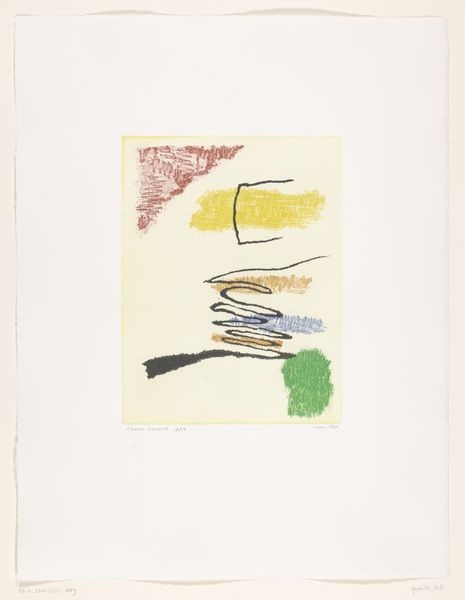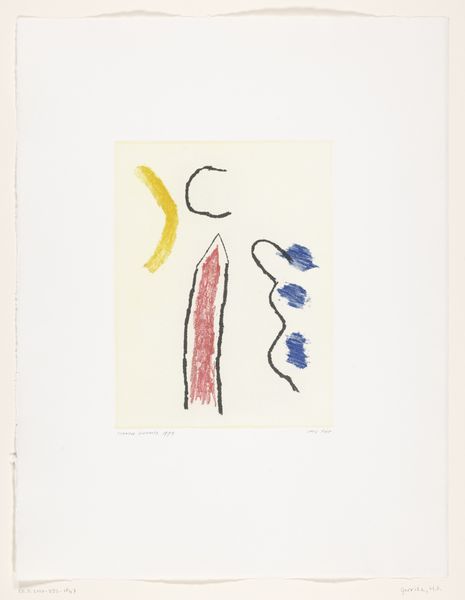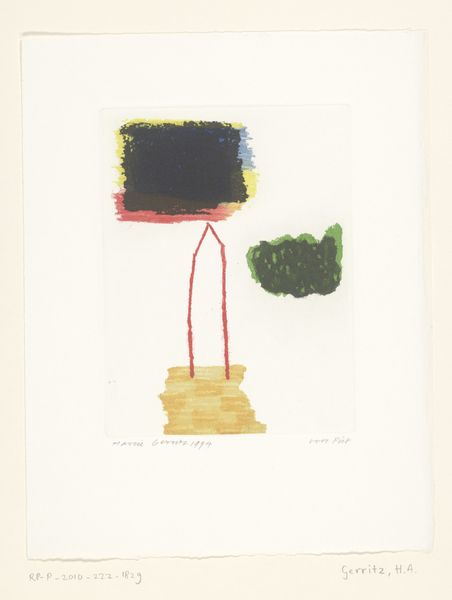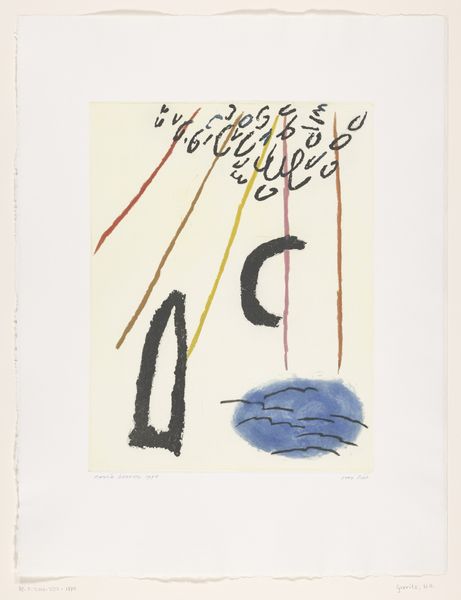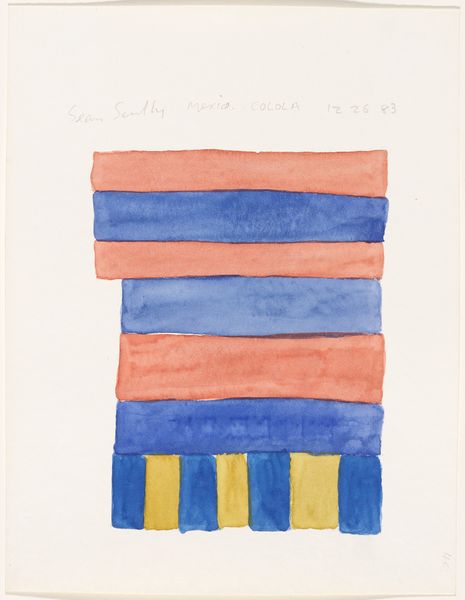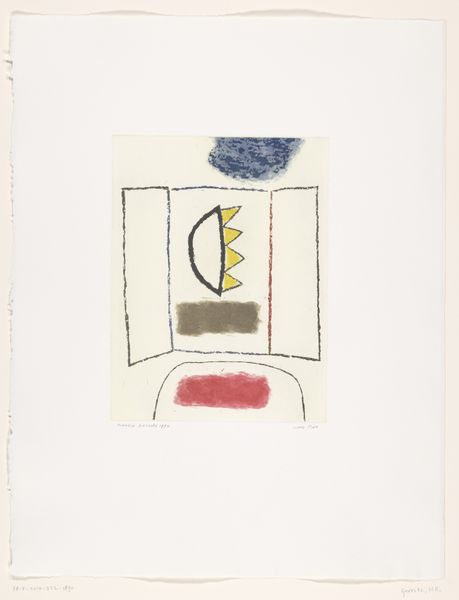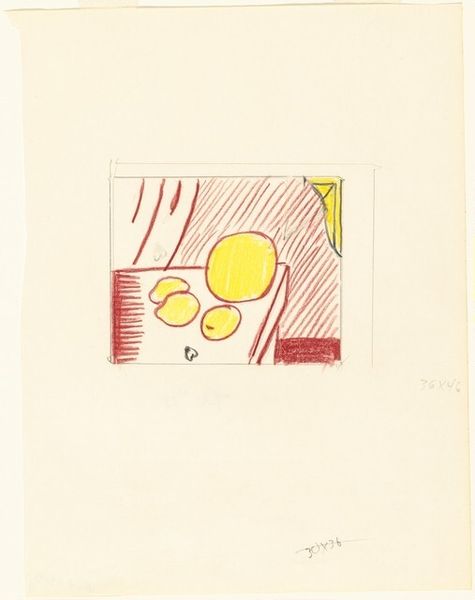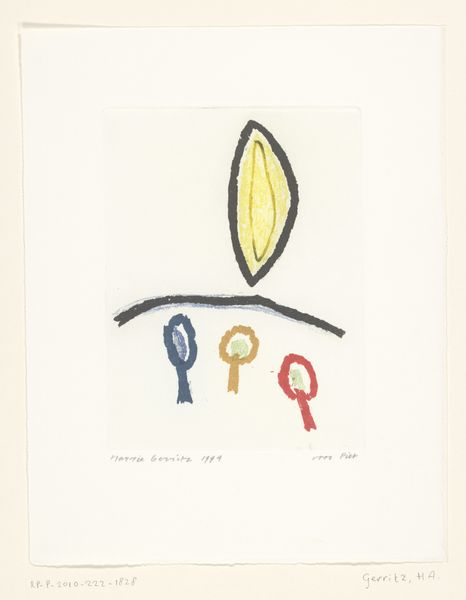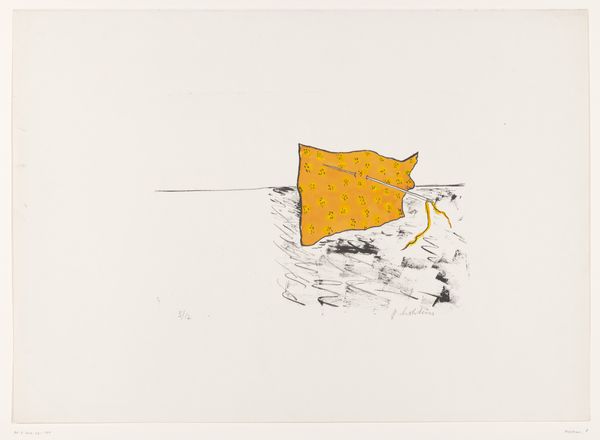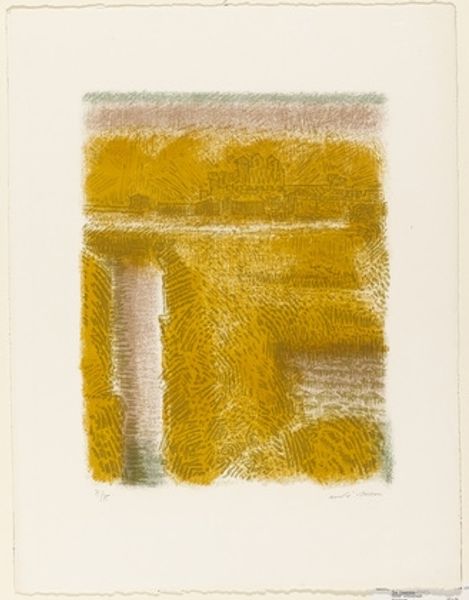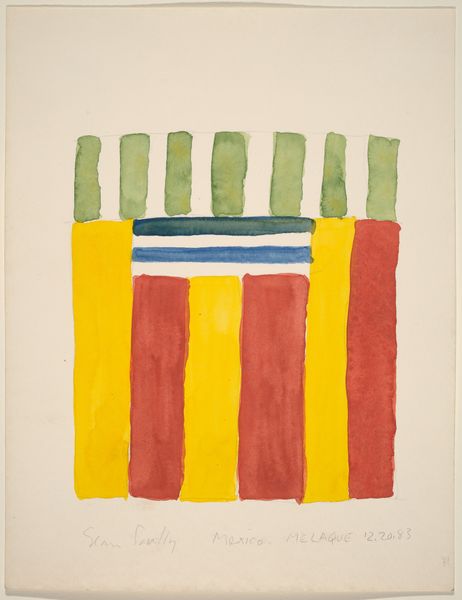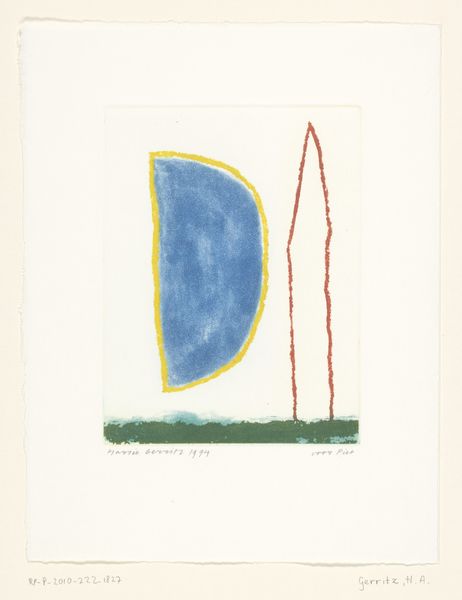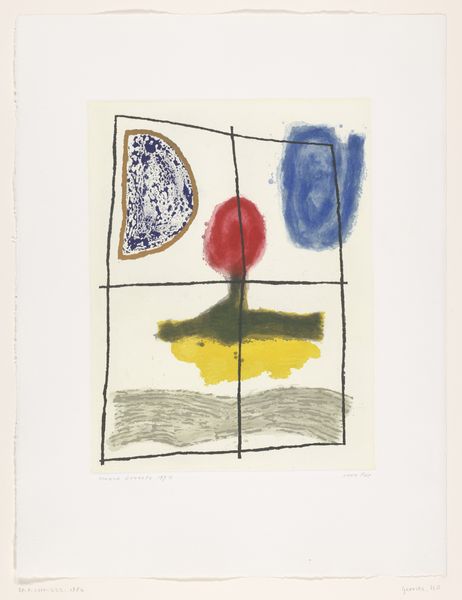
mixed-media, print
#
mixed-media
# print
#
abstract
#
geometric
#
modernism
Dimensions: height 660 mm, width 505 mm, height 429 mm, width 330 mm
Copyright: Rijks Museum: Open Domain
Curator: Editor: So, this mixed-media print by Harrie A. Gerritz, called "Abstracte compositie" from 1995… it's so simple, yet somehow evokes a sense of ancient ruins to me. What's your take on it? Curator: I see it as a commentary on constructed realities and the role of the artist in shaping those realities. Consider the geometric shapes: how do they challenge traditional notions of representation and power structures within artistic expression? Do they resonate with specific cultural anxieties or aspirations of the mid-90s, in your opinion? Editor: Hmm, I hadn't thought of it in terms of power structures. More in terms of… pure form? Curator: Precisely! The apparent purity is the smokescreen. The artist selects and arranges these forms, imbuing them with meaning – a deliberate act of creation that implicitly comments on what art is for, who art is for, and what it represents. Consider the context: the rise of postmodernism, the questioning of grand narratives. Doesn’t this piece echo those sentiments? Editor: It does now that you mention it. It makes me think about who gets to decide what "art" even means. The artist, the critics, the institutions… Curator: Exactly! And by using simple geometric shapes, Gerritz isn't just playing with form, but subtly critiquing the canon. Who was included? Who was not? What does 'abstract' truly conceal or reveal? It becomes a mirror reflecting society's biases. Editor: Wow, I'll never look at an abstract print the same way again. It really opened my eyes to the potential social commentary. Curator: Indeed. It serves as a potent reminder that art is not created in a vacuum; it's enmeshed within society. And it has the capacity to disrupt it.
Comments
No comments
Be the first to comment and join the conversation on the ultimate creative platform.
